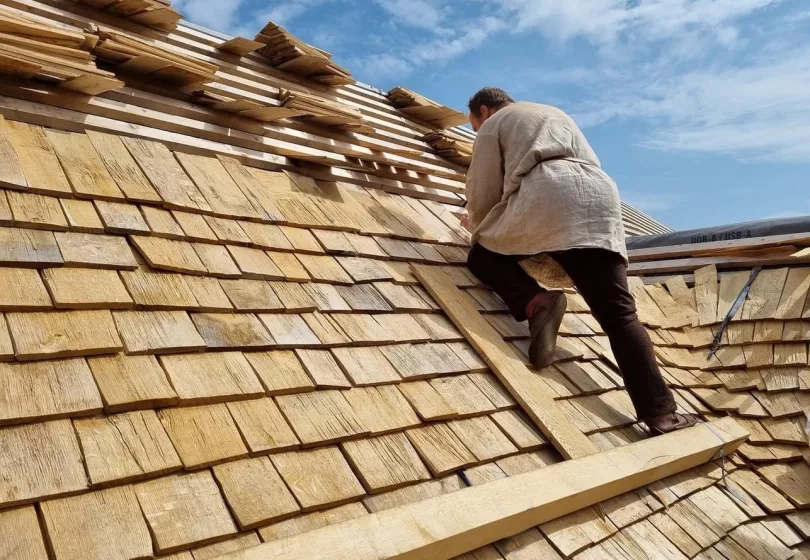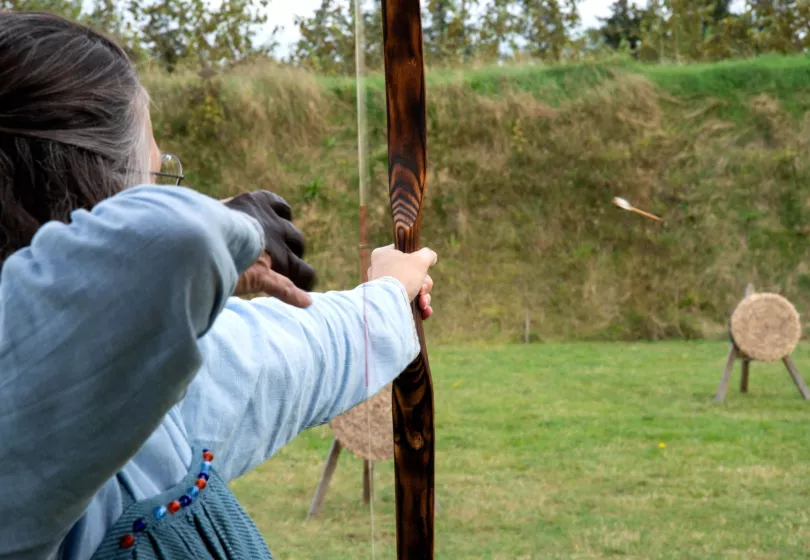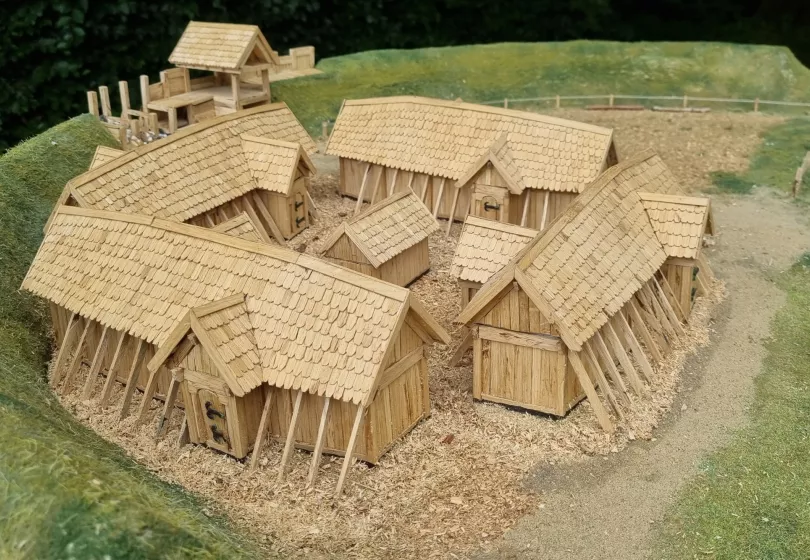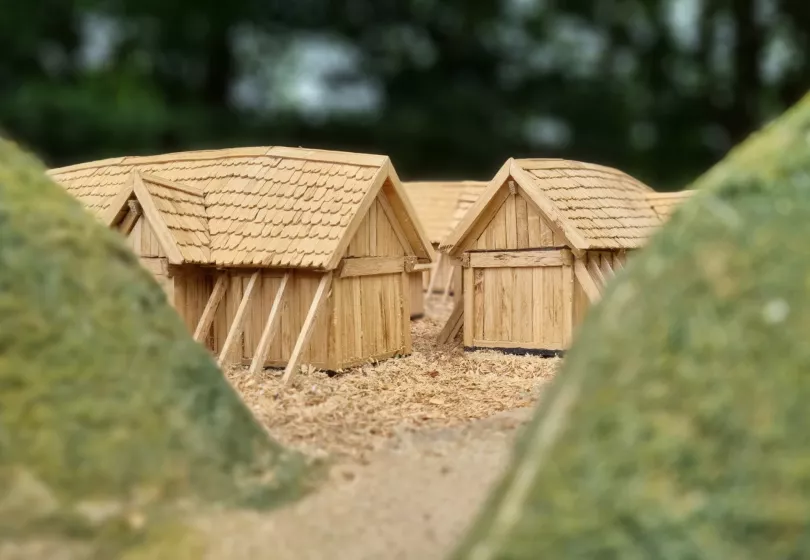A fortification of Ribe
There was a battle at the southern border at the end of the 900s, and for a time, Harold Bluetooth lost control of Dannevirke and Hedeby to the Germans. That is when a fortification of Ribe apparently became necessary. There never was a ring fortress near Ribe, but the semicircular trench facing east was replaced by an 8 m wide and 1 m deep moat. On the inner side was a 6 m wide and 2 m tall rampart. Archaeological traces suggest a building technique very similar to the one used at Danevirke.
Ribe was indeed a lucrative business, and warfare may have been necessary in the troubled 800s, when also the Scandinavians went on many expeditions. In 2014, archaeologists found a rider’s grave just a few metres to the north of the station. It contained a fully equipped war horse, which is an indication of warfare in Ribe.
Viking fortresses in Denmark
So far five large and perfectly circular Viking ring fortresses have been found in Denmark: two in Jutland, one on Funen and two on Zealand. There is also one in Scania in Sweden.The ring fortresses were fortifications built by King Harold Bluetooth between 974 and 981 AD. It was a time characterized by an extraordinary foreign policy situation. A new power was growing from central Europe and it may have been a crucial reason for Bluetooth to convert the Danes to Christianity, simply to avoid becoming the next target. However, the war threat from the south left his kingdom exposed to other threats from Norway and Sweden, and this may be the reason for the locations of the fortresses.
In the late 10th century, the ring fortresses were a striking spectacle and a distinct manifestation of the king’s power and influence. No other large fortifications is known to have existed in Denmark, except for city walls in Hedeby (in modern day Germany), Ribe and Aarhus.
The fortress in Ribe VikingeCenter is 65 m across, which is just under half the size of Trelleborg in Zealand. Denmark’s largest ring fortress is Aggersborg in North Jutland. It measures about 240 m across. Denmark's five Viking fortresses were included in UNESCO's World Heritage List in 2023.
The Viking Fortress in Ribe VikingeCenter
The wall itself was built in 2015 and at the end of 2022, the construction of four houses, a courtyard house, a gate and a palisade began. The construction is expected to be finished in 2025. During the opening hours of Ribe VikingeCenter, our visitors can see how the carpenters are getting on with the job. The Fortress is the scene for different activities like archery and warrior training, and we would also like to give the visitors an insight into the Vikings' impressive methods of construction.
As a project, the Fortress also has a social aspect with a significant focus on Ribe VikingeCenter's local network. The construction work is a co-operation between our own carpenters and a team of volunteers. With the Fortress as a new Viking setting, we will improve the facilities available to the volunteers, just as we will develop new leisure activities and communities for local children, young people and adults.





